UNESCO, which is the United Nations Educational Scientific and Cultural Organisation, has designated landmarks and areas throughout the world to be World Heritage Sites. This could be due to their historic significance, scientific features, or other important factors. Currently, there are 1,199 sites located across 168 countries. Not only does UNESCO promote them for tourism purposes, but they are committed to protecting them from such events as war, pollution, and natural disasters.
There are many UNESCO World Heritage Sites that you will have heard of, such as the Pyramids of Giza, the Taj Mahal, the Acropolis in Athens, the Great Wall of China, and Machu Picchu, Peru. However, there are many lesser-known sites which are equally as impressive and I’m going to tell you about 20 of the most spectacular ones.
Contents
- UNESCO World Heritage Sites To See Before You Die
- 1- Hierapolis And Pamukkale, Turkey
- 2- Spis Castle, Slovakia
- 3- Ksar Of Ait Benhaddou, Morocco
- 4- Wat Mahathat Ayutthaya, Thailand
- 5- Swiss Alps Jungfrau-Aletsch
- 6- Bryggen, Bergen, Norway
- 7- Mont Saint Michel, Normandy
- 8- Meroe Pyramids, Kabushiya, Sudan
- 9- Bete Giyorgis, Lalibela, Ethiopia
- 10- Skellig Michael, Ireland
- 11- Lines And Geoglyphs Of Nazca And Palpa, Peru
- 12- Bamiyan Valley, Afghanistan
- 13- Hohensalzburg Castle, Austria
- 14- Cliff Palace, Mesa Verde National Park, Colorado
- 15- Bwindi Impenetrable National Park
- 16- The Fortified City Of Carcassonne, France
- 17- Ha Long Bay, Vietnam
- 18- Meteora, Greece
- 19- Namib Sand Sea, Namibia
- 20- Vatnajokull National Park, Iceland
UNESCO World Heritage Sites To See Before You Die
1- Hierapolis And Pamukkale, Turkey
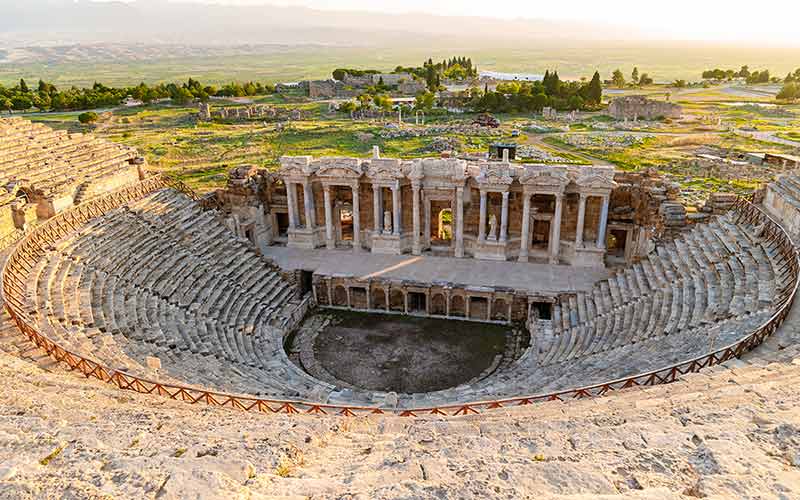
Located in southwest Turkey, you will find Pamukkale, a series of terraced basins filled with pools of warm water.
They formed over a period of thousands of years from the deposition of calcium carbonate from nearby hot springs.
Pamukkale was used as a thermal spa from as far back as the Roman era and is a spectacular area surrounded by waterfalls and forests.
It is possible to still bathe in the waters which are said to have healing properties.
Above the terraces, you will find the ancient city of Hierapolis, founded in the 1st century.
It became a wealthy city in the 2nd century as it was on the main route between Lydia and Syria.
When the Byzantines took over Turkey in the 12th century, the city was abandoned and later destroyed by an earthquake.
However, you can still see ruins of the baths, temples, and other monuments.
The area became a UNESCO World Heritage Site in 1988 and now attracts many visitors.
Recommended tour: From Antalya/Kemer: Pamukkale and Hierapolis Tour with Lunch.
2- Spis Castle, Slovakia
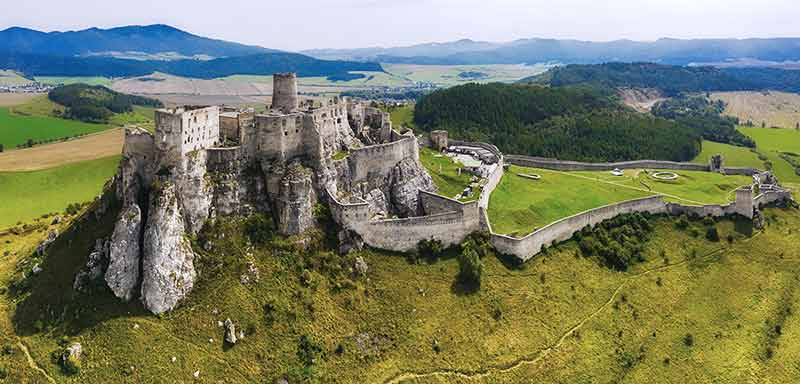
Spis Castle was declared a UNESCO World Heritage Site in 1993.
It is located in the northwestern part of eastern Slovakia and was built in the 12th century on the site of an earlier castle.
It is one of the largest castles in Europe, originally built in the Romanesque style, then rebuilt in the Gothic style, and finally in the Renaissance style.
It was partially destroyed by a fire in 1780 and it wasn’t until after the 2nd World War that it was reconstructed to its former glory.
Having belonged to royalty in the past, the castle now belongs to the state.
You can tour the castle and see the impressive bedrooms, bathrooms, armoury, chapel, and even a torture room.
The museum houses artefacts found in the area dating from the Stone Age to the Middle Ages, including Roman coins discovered in a cave underneath the castle.
You can climb the tower for beautiful views of the surrounding countryside.
3- Ksar Of Ait Benhaddou, Morocco
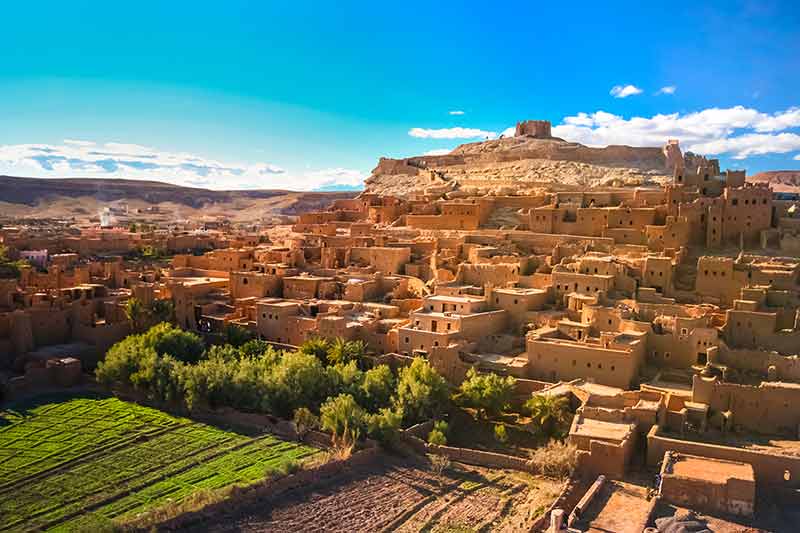
A UNESCO World Heritage Site since 1987, the Ksar of Ait Benhaddou in Morocco is a fortified village along the old caravan route between Marrakech and the Sahara Desert, overlooking the Ounila river valley.
The village was built around the 11th century as a settlement for Berber tribes.
It is a stunning example of Moroccan earthen clay architecture, and, being made from the soil, it looks as if it is rising out of the landscape. Impressively, it houses several kasbahs.
The population of the village gradually declined as the inhabitants moved to the other side of the river, now known as the new town.
Although Ait Benhaddou deteriorated, funds from UNESCO have kept it from going into disrepair as has done the income from many films shot here.
You can stay in the new town if you want to visit the site where, as well as hotels, there are restaurants, cafes, and shops.
Recommended tour: From Marrakech: Day Trip to Ouarzazate and Ait Benhaddou.
4- Wat Mahathat Ayutthaya, Thailand
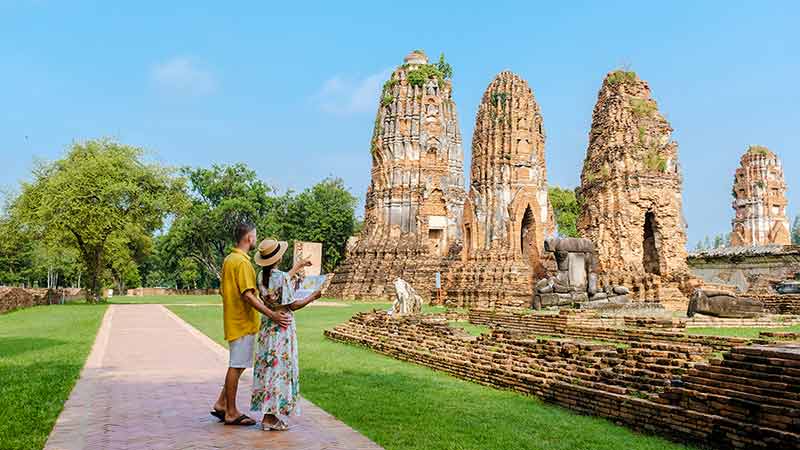
Wat Mahathat is a stunning temple built in the 14th century on the edge of the Ayutthaya Royal Palace.
It was an important temple used by royalty and senior officials.
Relics of Buddha and other treasures were kept here, and royal ceremonies were held from time to time.
In the centre of the temple is a staircase with railings resembling the mythical serpent-like naga.
In the central prong bronze and gold artefacts and other relics were discovered and are now displayed in the Chao Sam Phraya National Museum.
The highlight of the temple is the head of a Buddha statue which is entwined by the roots of a tree.
Wat Mahathat became a UNESCO World Heritage Site in 1991.
Recommended tour: From Bangkok: Ayutthaya Historical Park Guided Day Trip.
5- Swiss Alps Jungfrau-Aletsch
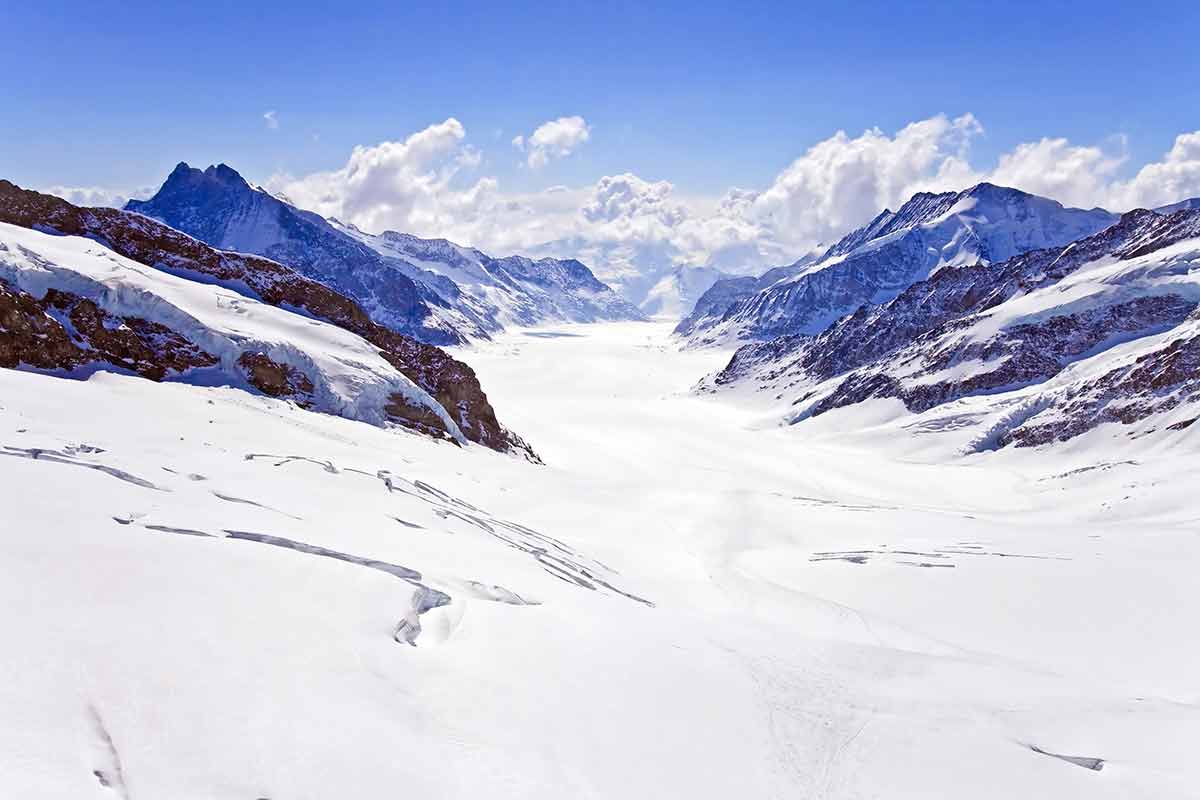
Yes, areas of natural beauty can also be UNESCO World Heritage Sites and Swiss Alps Jungfrau-Aletsch is particularly stunning.
It was designated in 2001 for its breathtaking scenery, glaciers, rugged terrains, and isolated valleys.
Swiss Alps Jungfrau-Aletsch is in southwestern Switzerland between Bern and Valais.
This mountainous region is home to three magnificent peaks, Elger, Monch, and Jungfrau.
The Swiss Alps are a lovely place to stay especially if you book a traditional Swiss chalet.
You are then right on hand to explore the different ecosystems to be found in the area.
Recommended tour: From Interlaken: Day Trip to Jungfraujoch by Bus and Train.
6- Bryggen, Bergen, Norway

This UNESCO World Heritage Site is a set of old Hanseatic buildings and a wharf in Bergen in Norway.
It has been an important part of the city for centuries and is the cultural hub of Bergen.
Originally built in the 12th century, it was destroyed by fire in 1702.
However, it was rebuilt on the foundations in the same style, so it looks as it did originally.
Here you will find interesting attractions such as a fish market, shops selling unique crafts, and Bergenhaus Fortress.
Some areas of Bryggen burnt down in 1955 and it was then that archaeological artefacts were found dating back to Mediaeval times.
They are exhibited at Bryggen Museum.
There is also another museum here, the Hanseatic Museum – Schotstuene where you can learn about the Hanseatic merchants and their lives covering 400 years.
Bryggen is an intriguing place to explore with its narrow alleyways, small quaint shops, and artists’ studios.
It was designated as a UNESCO World Heritage Site in 1979.
Recommended tours:
- Bergen: Guided Minibus Tour with Photo Stops & Bryggen Tour.
- From Bergen: Scenic Fjord Cruise to Mostraumen.
- Bergen: Sightseeing Cruise of Bergen’s Historic Landmarks.
7- Mont Saint Michel, Normandy
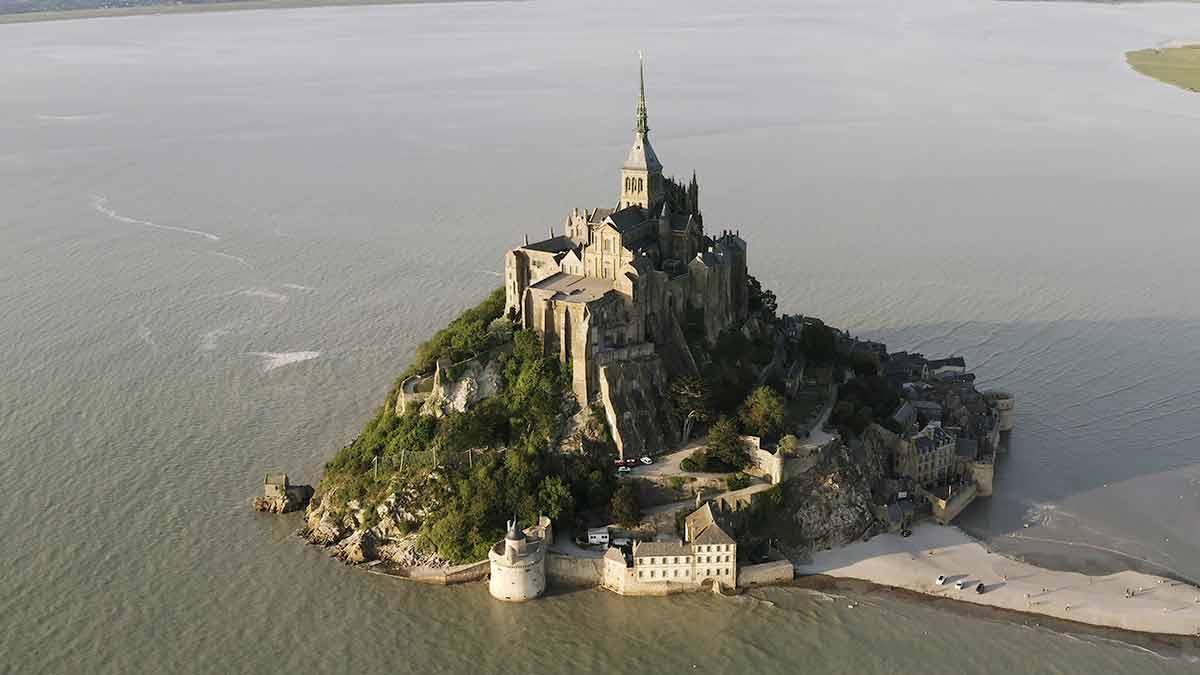
Mont Saint Michel became a UNESCO World Heritage Site in 1979.
It is a stunning mediaeval abbey perched on rocky cliffs on an island in Normandy cut off from the mainland during high tides.
Building began in 708 AD, and it took 1,300 years to complete.
The building represents the hierarchy of the time.
The abbey and the monastery are at the top because religion was deemed the most important factor of life.
Below are the great halls, and finally the stores and housing.
Outside the walls would have been housing for fishermen and farmers.
From the 10th century, Mont Saint Michel was a popular pilgrimage site.
However, during the French Revolution, most of the monks left and it became a prison for a number of years.
It is truly memorable visiting Mont Saint Michel but, as it is on top of a rock and there are a large number of steps, it is only for the fit and healthy.
Recommended tour: Mont Saint-Michel: Entry Ticket to Mont-Saint-Michel Abbey.
8- Meroe Pyramids, Kabushiya, Sudan

The Meroe Pyramids of Sudan may not be as tall as the pyramids of Egypt which are up to 139 metres (456 feet) high.
They are between 6 metres (19.68 feet) and 30 metres (98.42 feet), but they are awe-inspiring and well worth visiting.
They were designated a UNESCO World Heritage Site in 2011.
They aren’t nearly as busy as the pyramids of Egypt, so you won’t have to fight with the crowds.
The journey to reach them takes you through a desert dotted with authentic Sudanese villages.
The pyramids were built by the ancient Nubians over 2,000 years ago.
They were built from granite and sandstone and have small bases and steep slopes.
They are some of the best-preserved pyramids in the world.
9- Bete Giyorgis, Lalibela, Ethiopia
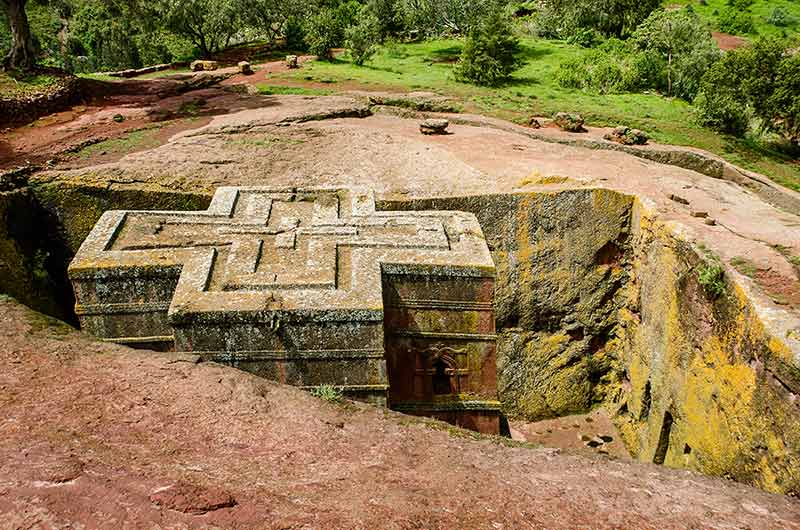
Designated in 1978, Bete Giyorgis is in the city of Lalibela, named after the 12th century King, George Mesqel Lalibela.
He commissioned 11 churches to be built into the rocks to replicate the city of Jerusalem.
Bete Giyorgis is the most spectacular of these churches.
It is almost 2,500 metres (8,202 feet) high up and can be accessed by a trench and tunnel leading to a sunken courtyard.
The edifice is in the form of a Greek Cross, and this is repeated three times on the roof.
The church is still used by the Ethiopian Orthodox Church and inside you will see a baptistery and several caves which are used as accommodation for priests and as burial tombs.
Recommended tour: Lalibela: Churches Full-Day Private Tour w/Coffee Ceremony.
10- Skellig Michael, Ireland
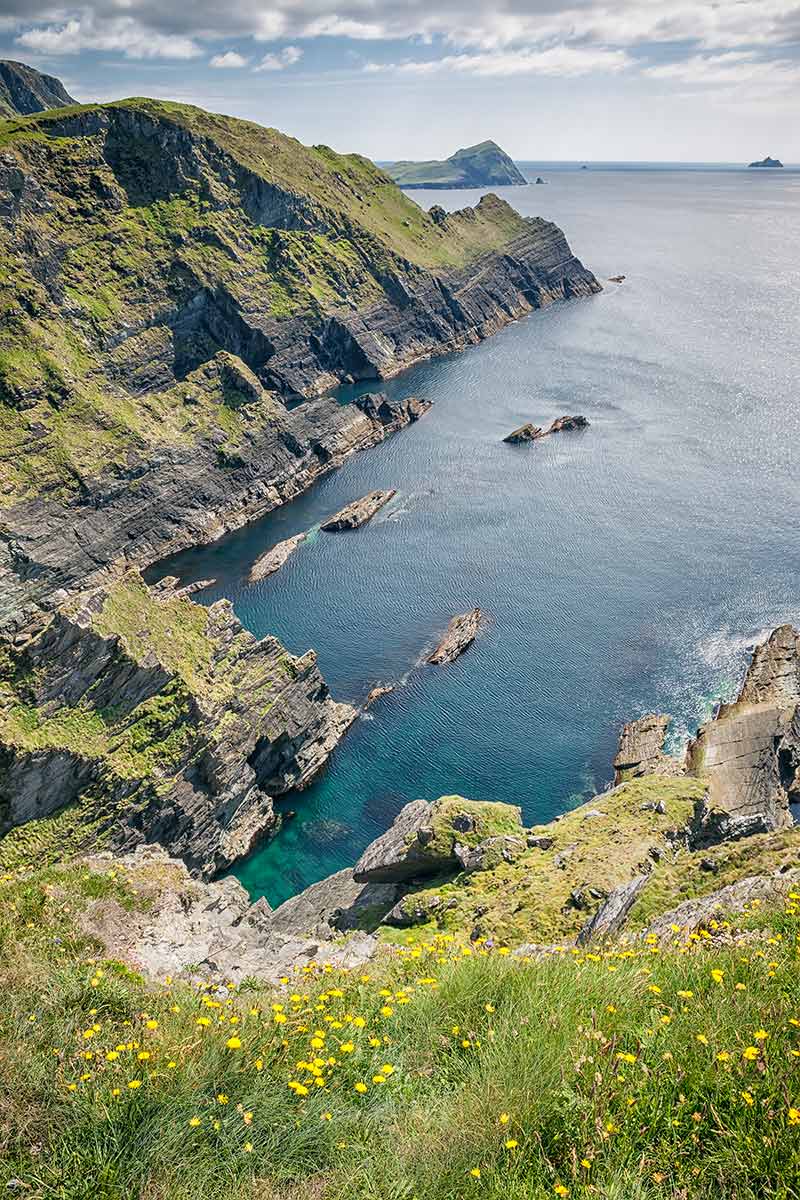
Designated in 1996, the island of Skellig Micael is one of just two UNESCO World Heritage Sites in the Republic of Ireland.
It lies in the northwest of the country and rises majestically out of the Atlantic Ocean.
At the summit is St.Fionan’s monastery, used by the monks until the 13th century.
They slept in beehive-shaped huts made of stone, many of which can still be seen today.
It later became a place of pilgrimage and during the Penal Laws, a haven for Roman Catholics.
Climb the 618 steep steps to the monastery for awe-inspiring views. It is well worth the effort.
It is 180 metres (600 feet) above sea level.
There is a profusion of bird life on the island including the second-largest gannet colony in the world.
Recommended tour: Skellig Michael: The Ultimate Skellig Coast Tour.
11- Lines And Geoglyphs Of Nazca And Palpa, Peru
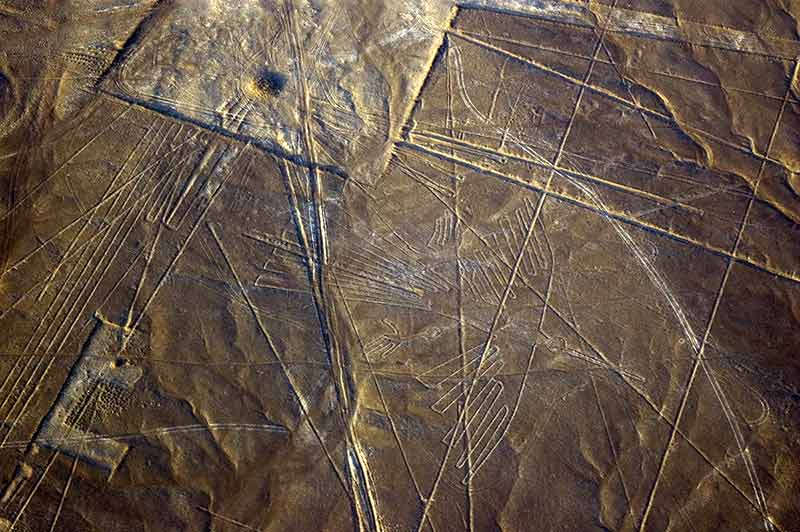
These geoglyphs, designated a UNESCO World Heritage Site in 1994, are in the Nazca desert and are well worth seeing.
The lines and drawings were made between 500 BC and 500 AD and were created by removing the top layer of red pebbles to show the paler ground underneath.
Because it rains so infrequently in the area, they have been preserved to this day.
The drawings depict animals, birds, and insects while the lines are perfectly straight.
They are particularly spectacular because of their size and variations.
It’s thought that they had a ritual astronomical function.
They are best seen by taking a flight over the area.
Recommended tour: From Nazca: 35-Minute Flight Over Nazca Lines.
12- Bamiyan Valley, Afghanistan
The kingdom of Bamiyan was a Buddhist state in present-day Afghanistan located on the Silk Road.
It was designated a UNESCO World Heritage Site in 2003.
The site contains many caves in which can be seen the remains of wall paintings and seated Buddha figures.
There were two magnificent Buddhas carved into the cliffs, one measuring 55 metres (180.4 feet) and the other 37 metres (121.3 feet).
However, in 2001, the Taliban deliberately targeted and destroyed them, leaving only the niches.
13- Hohensalzburg Castle, Austria
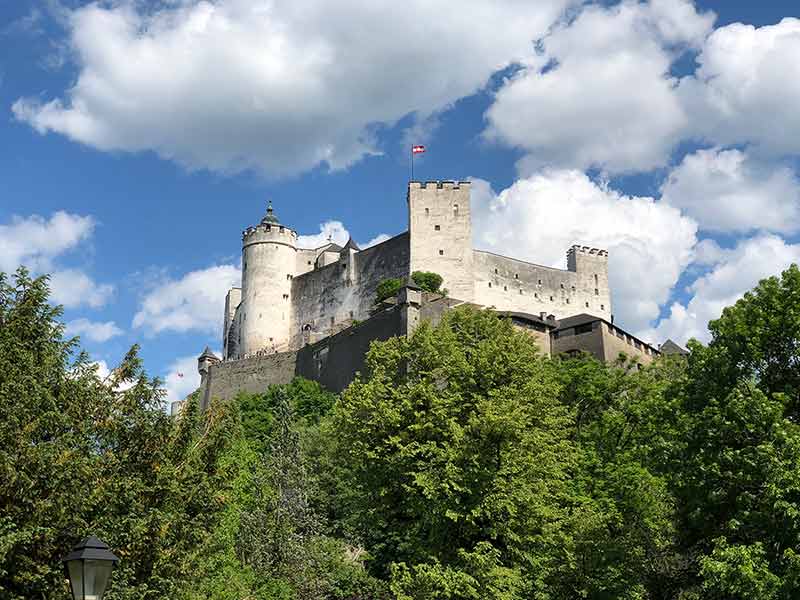
In 1997, Hohensalzburg Castle was designated a UNESCO World Heritage Site.
It is one of the largest castles in Europe and was built around 1,000 years ago.
It was expanded over the years and the armaments upgraded, particularly between 1495 and 1579.
What was built then is what you see today.
No enemies were ever able to conquer the castle showing how well-built it was.
During the 1st World War, it was used as a prison.
There is plenty to see in the castle including the Medieval Royal apartments, the Castle Museum, and a puppet museum showcasing exhibits from the Salzburg Marionette Theatre.
In addition, the Rainer Regiment Museum tells you about the Salzburg infantry regiment.
The castle also hosts dinner concerts with music by the Mozart Chamber Orchestra.
Recommended tour: Salzburg: Best of Mozart Fortress Concert and Dinner.
14- Cliff Palace, Mesa Verde National Park, Colorado
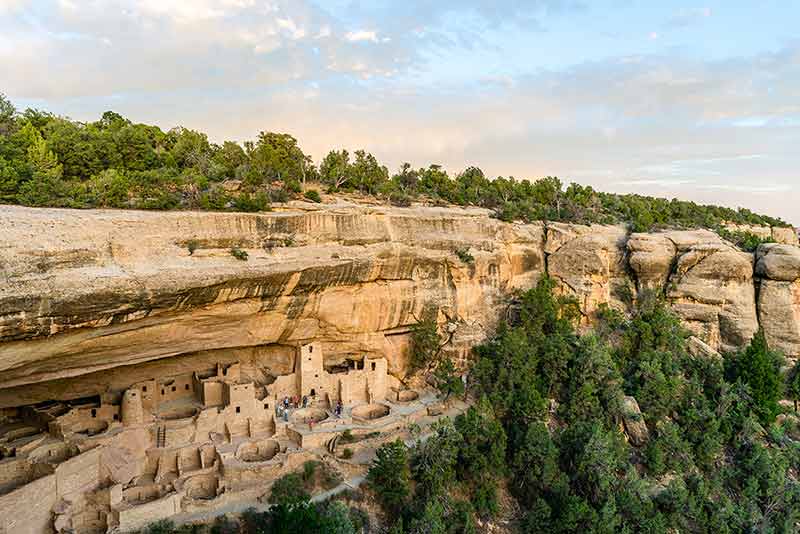
The Pueblo people called the Mesa Verde their home for around 700 years from 600 – 1300 AD.
Cliff Palace was built around 1200 AD.
It was different from the other 600 or so cliff dwellings in the park which were much smaller, having between one and five rooms each.
Cliff Palace, on the other hand, had 150 rooms and 23 kivas, which were rooms used for religious rituals.
It was also built deeper into the rocks than the other dwellings.
Cliff Palace was constructed from sandstone, mortar, and wooden beams.
The walls were decorated with earthen plasters coloured pink, brown, red, yellow, and white.
Cliff Palace became a UNESCO World Heritage Site in 1978.
Recommended tour: Durango: Mesa Verde Express Tour and Tickets to Cliff Palace.
15- Bwindi Impenetrable National Park
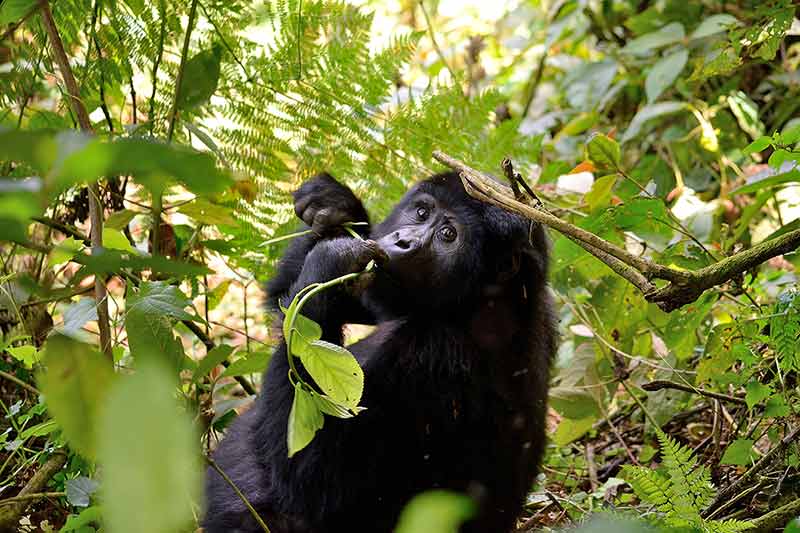
Designated a UNESCO World Heritage Site in 1994, Bwindi is a stunning park and one of the few places where endangered mountain gorillas can be seen in their natural habitat.
The park is amazing with forested mountains, colourful birds, mists and thick vegetation.
Do you remember the film, Gorillas in The Mist?
This was where it was filmed and visiting it will evoke memories.
You can go on a guided hike through the rainforest to spend an hour with the gorillas.
This is my dream holiday and I hope one day to accomplish it.
The park has more than half of the world’s population of gorillas and is the only place where gorillas and chimpanzees live together.
The park covers 321 km2 (123.9 miles2) and is home to 169 species of trees, 100 species of fern, over 347 species of forest birds, and 200 species of butterflies.
Recommended tour: From Kigali: 2-Day Gorilla Trek & Bwindi National Park.
16- The Fortified City Of Carcassonne, France
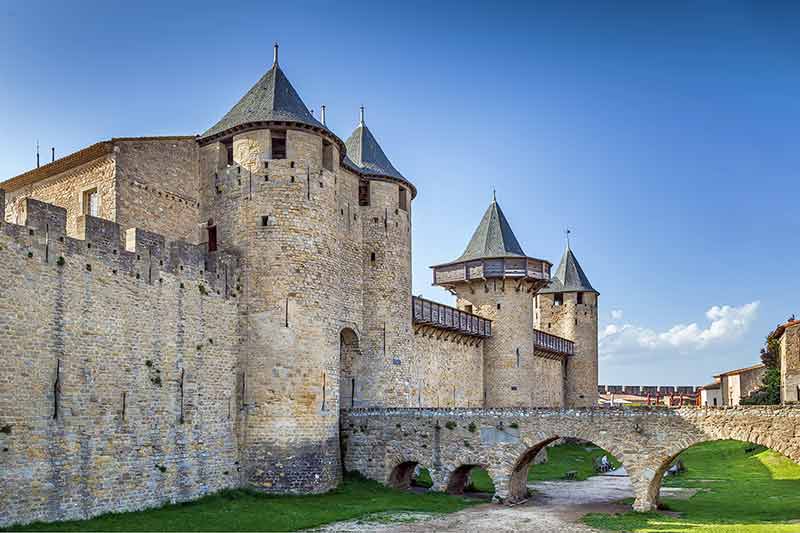
Carcassonne, designated a UNESCO World Heritage Site in 1997, is an ancient town on top of a hill in the south of France.
It is one of the largest and best preserved Mediaeval fortresses in Europe.
Carcassonne was first built by the Romans in 122 BC and subsequently changed hands.
Between the 12th and 13th centuries, it was used as a stronghold against invading forces.
There is plenty to see within the citadel including Chateau Comtel, a 12th century castle which offers tours and archaeological exhibits.
The Basilique St. Nazare is also worth visiting.
It is a Romanesque and Gothic cathedral with stunning stained-glass windows.
Recommended tour: Carcassonne: Castle and Ramparts Entry Ticket.
17- Ha Long Bay, Vietnam
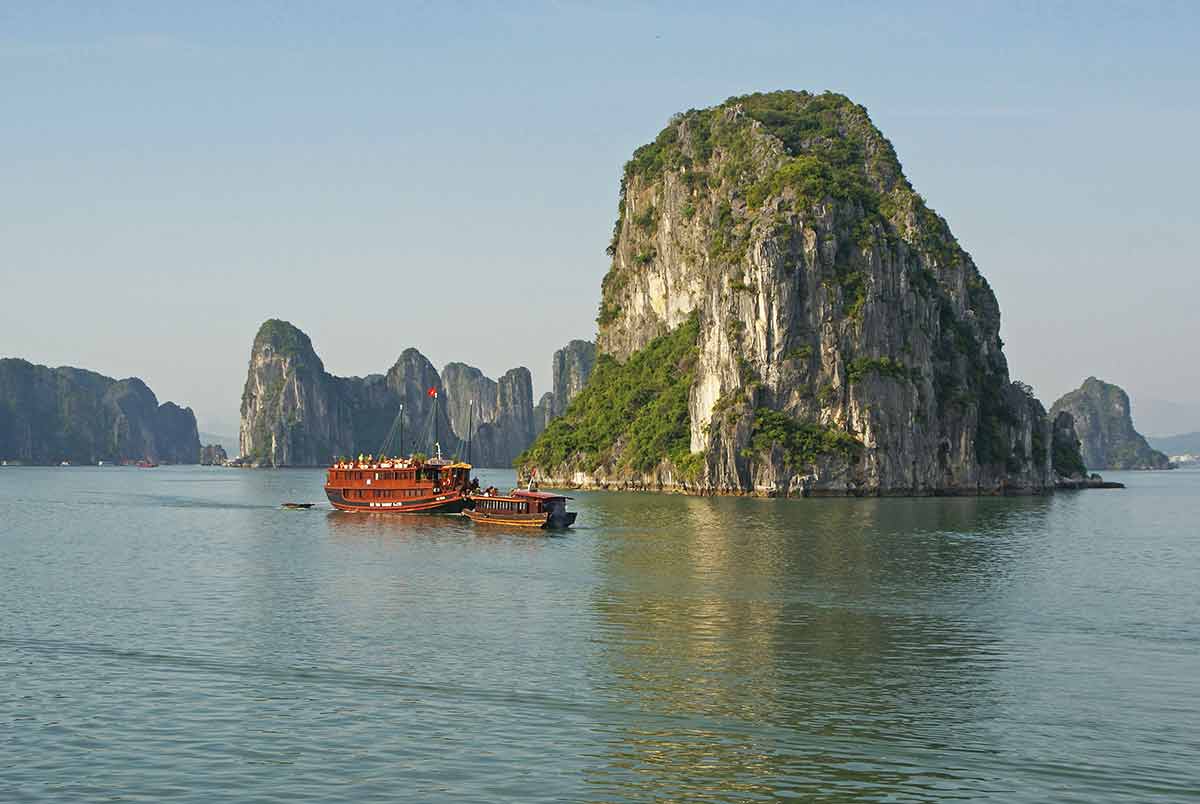
Ha Long Bay in northeast Vietnam became a UNESCO World Heritage Site in 1994 and is a beautiful area with thousands of limestone islands topped with rainforests.
The area houses the largest maritime forest in the country and 4,910 species of animals and plants, both on land and in the sea.
198 of these are on the endangered list and much is being done to keep them alive.
You can visit the area in a junk boat or on a kayaking expedition.
Recommended tour: Hanoi: Full-Day Halong Bay, Cave, Island, Swim, & Kayak Tour.
18- Meteora, Greece
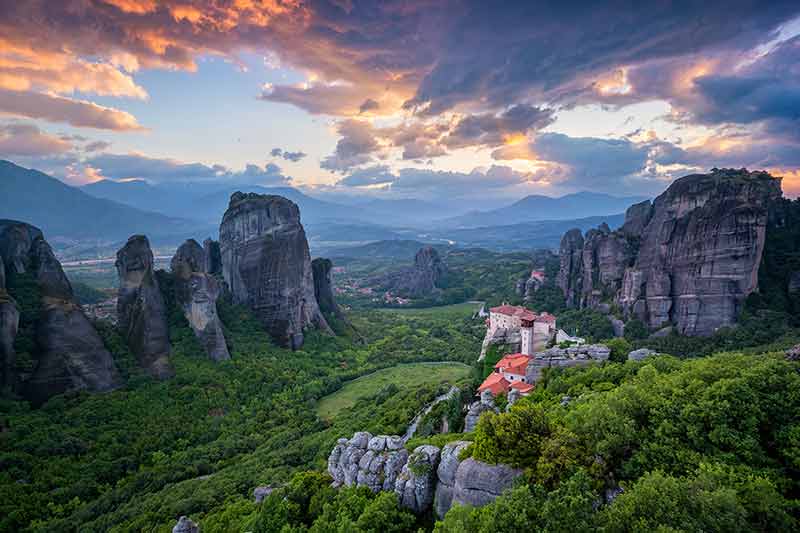
Meteora is in northwestern Greece and is a collection of Byzantine monasteries perched high on sandstone rocks built in what was a practically inaccessible location.
There were originally 24 monasteries but just six are open to the public now.
The monasteries were built between the 14th and 16th centuries.
The chapels are beautifully decorated with stunning frescoes and spacious courtyards.
The views from the monasteries are spectacular.
Meteora was designated a UNESCO World Heritage Site in 1988.
Recommended tour: Athens: Meteora Monasteries & Caves Day Trip & Lunch Option.
19- Namib Sand Sea, Namibia
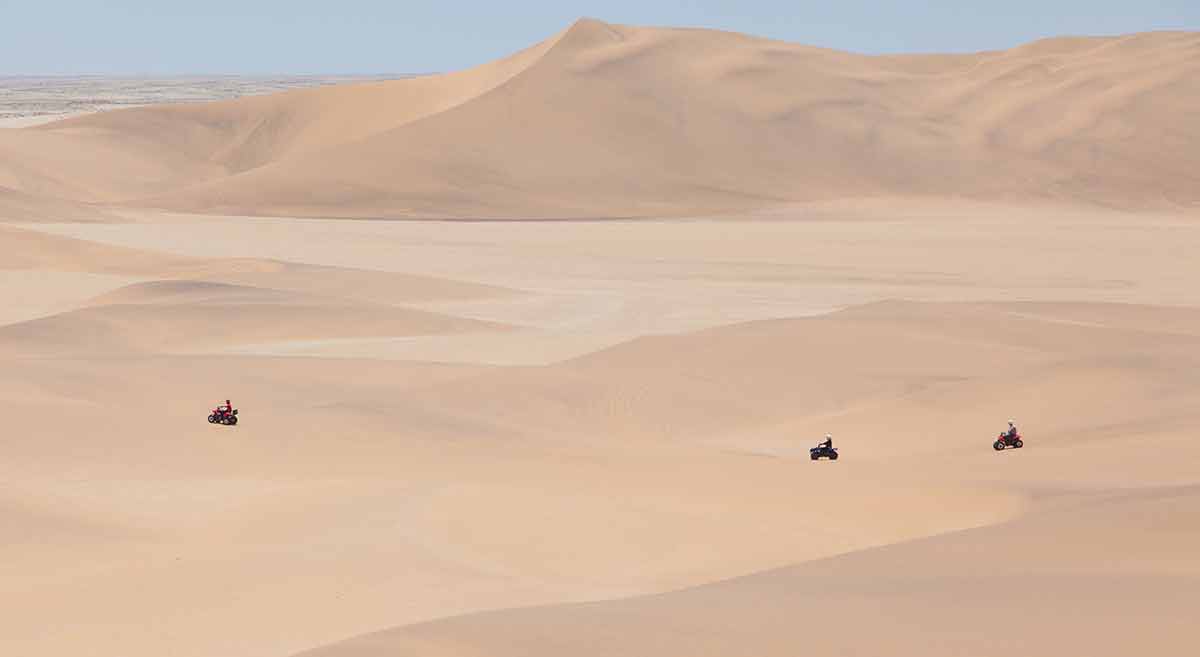
The Namib Sand Sea is the only coastal desert in the world and covers a massive 30,000 km 2 (11,583 miles 2).
Most of the sand here has been carried a great distance to be deposited here.
The desert is made up of two dune systems.
One is an ancient semi-consolidated one and the other, a younger active one.
The main source of water is from fog, but nevertheless, there is exceptional visibility during the day.
Despite being so arid, many reptiles and invertebrates manage to live here.
It is a great place to explore in a 4 X 4 vehicle and to camp.
It was designated a UNESCO World Heritage Site in 2013.
20- Vatnajokull National Park, Iceland
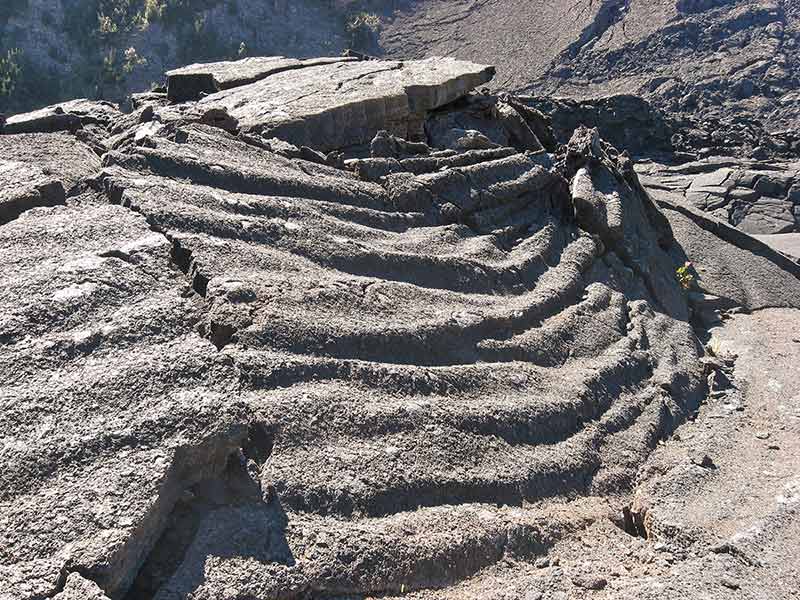
Vatnajokull National Park, a UNESCO World Heritage Site since 2019, offers glaciers, volcanoes, and beautiful waterfalls.
It covers 14,700 km 2 (5,675.7 miles 2) which is about 15% of the area Iceland covers.
The largest glacier in the country is situated in the park.
Vatnajokull Glacier measures 7,700 km 2 (2,973 miles 2).
It is possible to take a guided hike to the glacier but if you don’t feel quite so brave, visit one of the more accessible ice caves.
The glacier hike covers 4 – 6 km (2.48 – 3.72 miles) so you need a reasonable amount of fitness.
Recommended tour: Jökulsárlón: Vatnajökull Glacier Guided Hiking Tour.
Plan Your Trip

Rent A Car – Find the best car rental rates at Discover Cars. They compare car hire companies to provide you with the best deal right now.

Find A Hotel – If you’re curious about this article and are looking for somewhere to stay, take a look at these amazing hotels.


